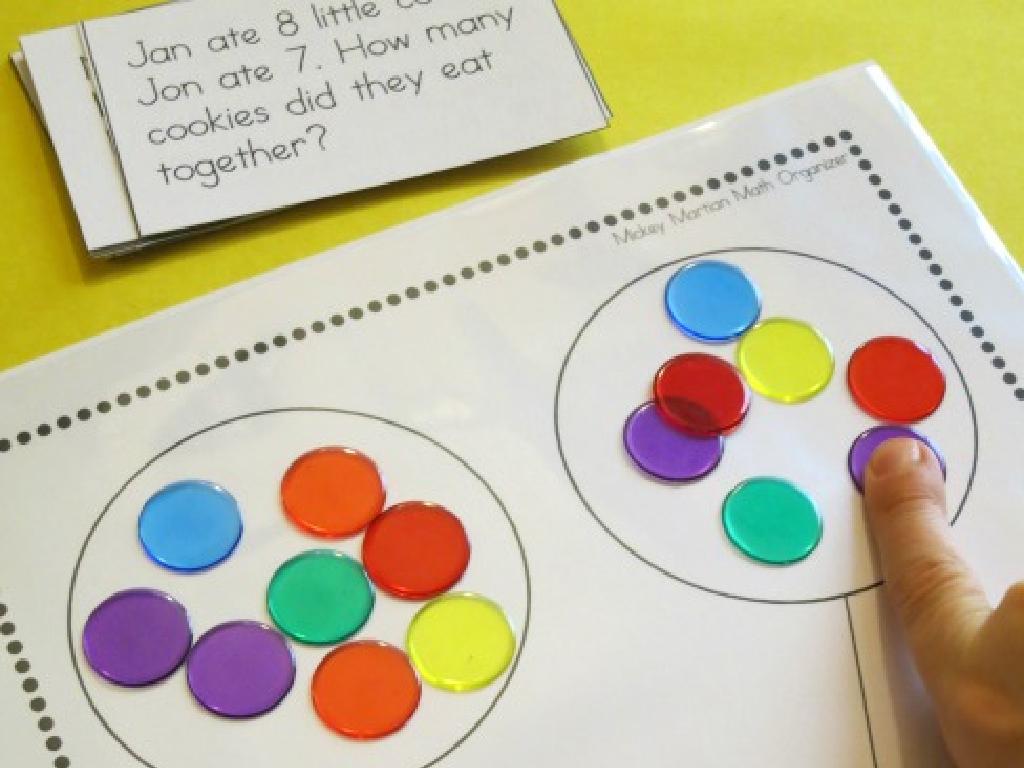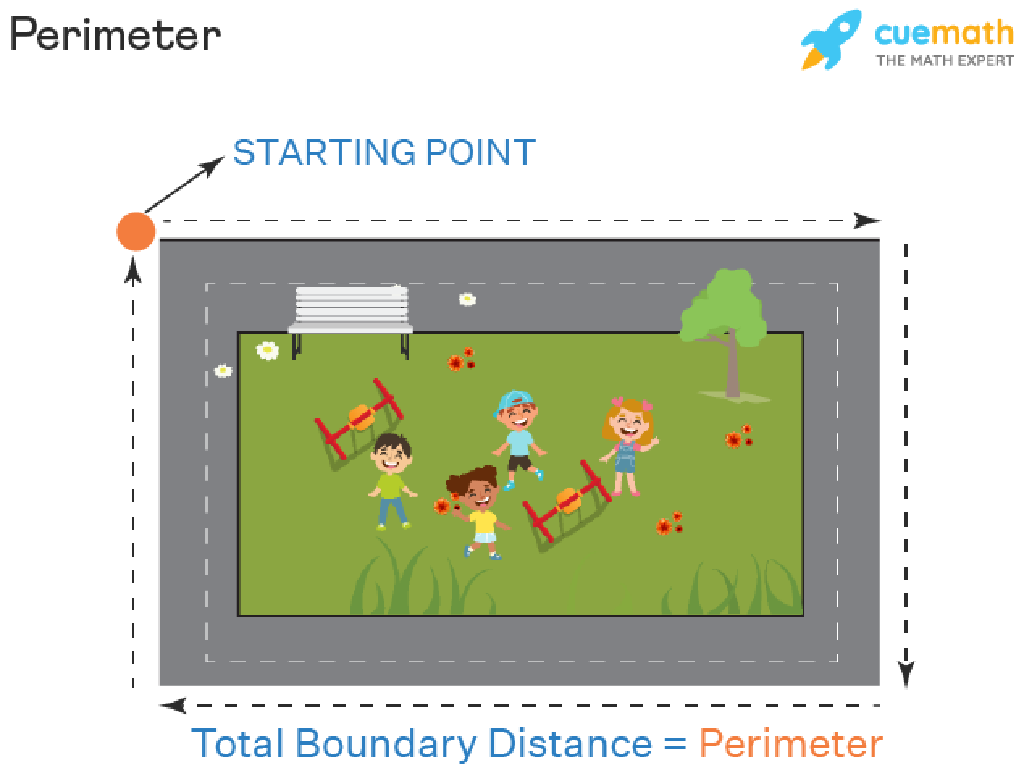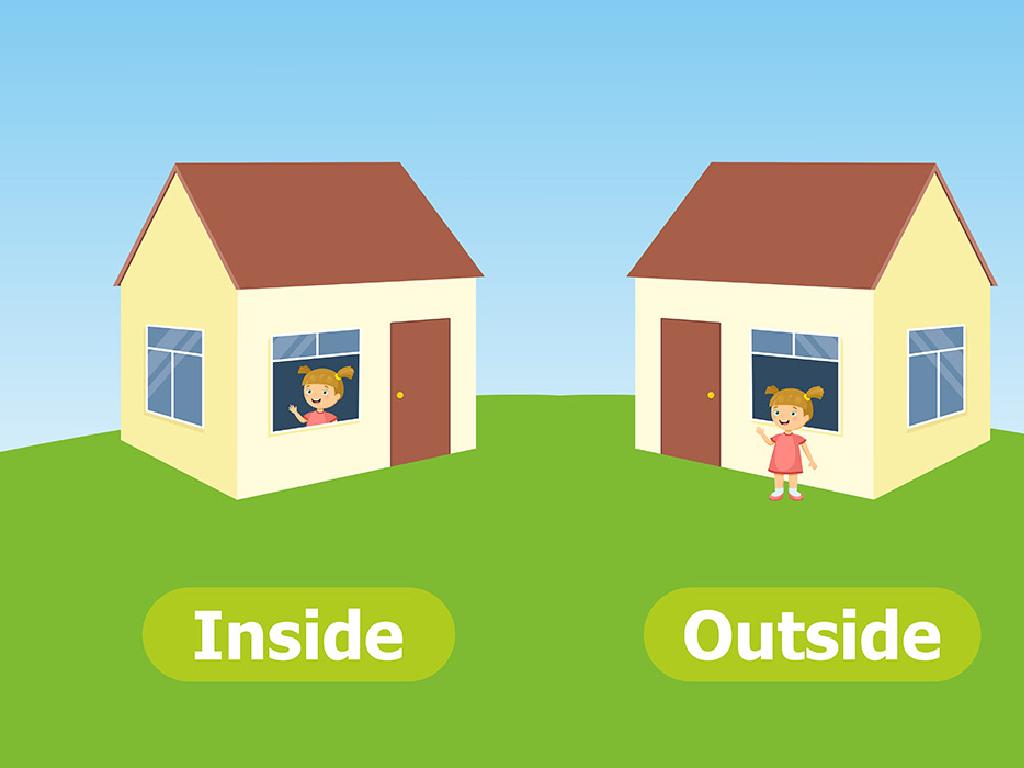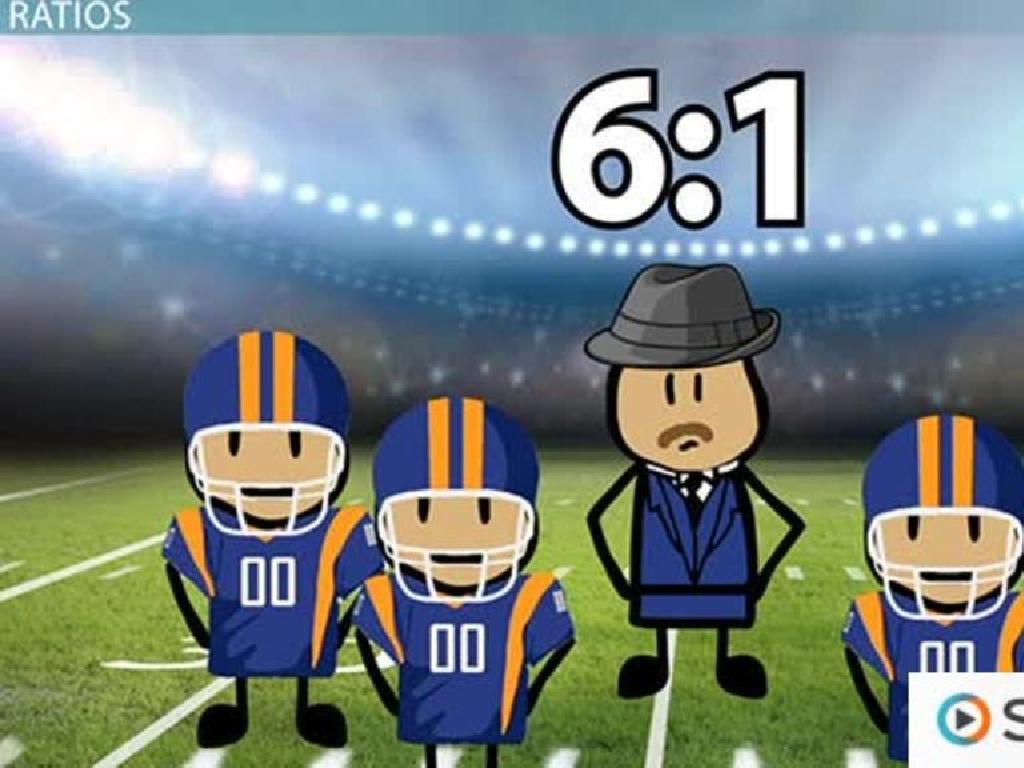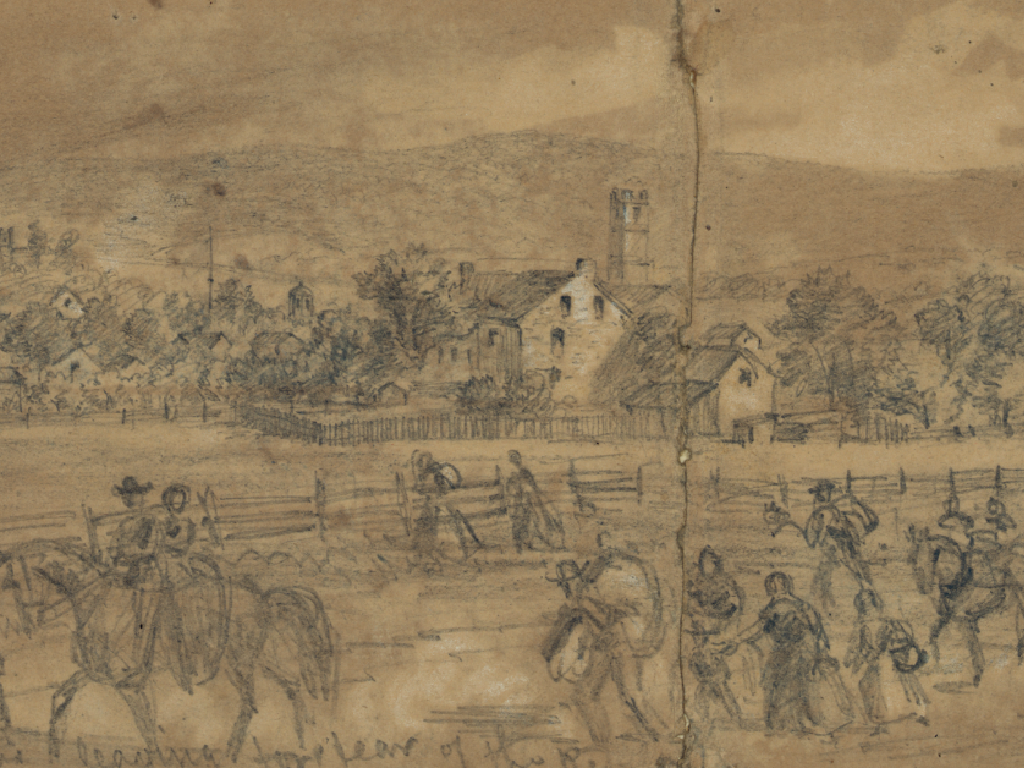Writing Numbers Up To One Billion: Convert Between Words And Digits
Subject: Math
Grade: Fourth grade
Topic: Place Value
Please LOG IN to download the presentation. Access is available to registered users only.
View More Content
Welcome to Place Value: Numbers to One Billion
– Grasping large numbers
– Understanding numbers as big as 1 billion
– Today’s goal: Numbers to 1 billion
– Place value’s daily role
– How we use place value in money, time, and measurements
– Practice with real examples
– Use examples like population, distances, or savings
|
This slide introduces students to the concept of place value for numbers up to one billion. Begin by explaining the magnitude of large numbers and how they are structured. Emphasize today’s learning objective, which is to write these large numbers in both numeric and word format. Discuss the relevance of place value in practical scenarios such as calculating money, understanding time, and measuring distances. Provide real-life examples where large numbers are used, like the population of a country, the distance between planets, or the amount of money saved in a bank. Encourage students to think of other examples where they encounter large numbers. This will help them appreciate the importance of place value in everyday life and engage them in the learning process.
Understanding Place Value
– Define Place Value
– Place value determines the value of a digit in a number based on its position.
– Value of each position
– Each step to the left increases value 10 times: 1s, 10s, 100s, etc.
– Examples: ones to billions
– Ones: 7; Tens: 70; Hundreds: 700; Thousands: 7,000
– Practice with large numbers
– Convert ‘five hundred million’ to digits and vice versa.
|
Begin by explaining the concept of place value, which is the foundation of our number system. Emphasize that the position of each digit in a number determines its value. Use clear examples starting from the ones place and moving left to the billions place to illustrate how each step increases the value tenfold. Provide students with examples of large numbers, both in words and digits, and ask them to convert between the two. This will help them grasp the concept of place value in the context of very large numbers. Encourage students to practice with numbers up to one billion to ensure they are comfortable with place value across a wide range.
Numbers in Words: Writing and Converting
– Writing numbers with words
– Learn to express digits as written words
– Examples: 23 and 467
– 23 is written as Twenty-three, 467 as Four hundred sixty-seven
– Practice conversion together
– Convert numbers from digits to words as a class activity
– Understanding place value
|
This slide introduces the concept of writing numbers in word form, which is a key aspect of understanding place value. Start by explaining the basic rules for writing numbers in words, such as writing out the number 23 as ‘Twenty-three’. Use clear examples to illustrate these rules, and then engage the class in a group activity to practice converting digits to words. Emphasize the importance of place value in determining the position and value of each digit in a number. This will help students grasp the concept of larger numbers and prepare them for writing numbers up to one billion.
Converting Words to Digits
– Writing words as numbers
– Examples: Words to digits
– ‘Five thousand’ becomes 5,000 and ‘Seventy-eight million’ is 78,000,000
– Group practice activity
– Convert word descriptions into number format as a class
– Understanding place value
– Recognize the value of each digit in a large number
|
This slide is aimed at helping fourth-grade students understand how to convert numbers written in word form into digit form, focusing on numbers up to one billion. Start by explaining the concept of place value and its importance in understanding large numbers. Use clear examples like ‘Five thousand’ which translates to 5,000 and ‘Seventy-eight million’ which is written as 78,000,000 to illustrate the conversion process. Engage the class with a group practice activity where students work together to convert a list of numbers from words to digits. This will help reinforce their understanding of place value and the base-ten number system. Encourage students to ask questions and provide assistance as needed to ensure comprehension.
Exploring Place Value: Numbers to One Billion
– Introduction to place value chart
– A tool to understand the value of each digit in a number
– Using the chart with large numbers
– See how digits change value from ones to billions
– Interactive class example
– Let’s build a number together on the chart!
– Practice converting words to digits
– Convert ‘seven hundred million’ to digits
|
Begin by explaining the concept of place value and how each position of a digit in a number determines its value. Introduce the place value chart and demonstrate with an example number, such as 123,456,789, how each digit falls into a specific place, from ones to hundreds of millions. Engage the class with an interactive example where students come up to the board to place digits in the correct place value on the chart. Finally, have students practice converting words to digits, starting with simpler numbers and building up to one billion. This will help solidify their understanding of place value and the magnitude of large numbers.
Let’s Practice Writing Numbers!
– Practice with digits and words
– Convert numbers from words to digits and vice versa
– Use a place value chart
– Chart helps identify the value of each digit
– Class examples together
– Solve examples as a class to learn together
– Understanding large numbers
|
This slide is designed for a class activity where students will practice converting numbers up to one billion into words and vice versa. The place value chart is a crucial tool in this exercise, helping students visualize the position and value of each digit in a large number. Working on examples as a class fosters a collaborative learning environment and allows for immediate feedback and clarification. It’s important to ensure that students understand the concept of place value for large numbers, as it is foundational for their mathematical development. The teacher should prepare several examples of varying difficulty and encourage students to participate actively in the exercise.
Group Activity: Numbers to Words
– Break into small groups
– Convert a large number
– Each group receives a different number up to one billion
– Write the number in words
– Use place value to write the number in word form
– Present findings to class
|
This group activity is designed to help students practice converting large numbers into words using their understanding of place value. Divide the class into small groups and assign each group a different large number, ensuring the numbers are varied and up to one billion. Provide guidance on how to break down the numbers into smaller parts using place value and then convert those parts into words. Encourage collaboration within the groups. After the conversion, each group will write their number in word form on a piece of paper or a whiteboard. Finally, have each group present their findings to the class, explaining the process they used to convert the number. This will reinforce their understanding and provide an opportunity for peer learning. Possible numbers for the activity could be 123,456,789; 98,765,432; 567,890,123; and so on.
Place Value Game: Words to Digits!
– Engage in a matching game
– Take turns to match words and digits
– Learn place value with fun
– Understand numbers up to one billion
– Compete and reinforce learning
– Friendly competition helps memorize concepts
|
This interactive class activity is designed to help students understand and practice the concept of place value by matching written words to their corresponding digit forms. Each student will have a turn to participate in the game, which will involve cards or a digital tool that displays numbers in word format on one side and digit format on the other. The goal is to find matching pairs. To add a competitive element, points can be awarded for correct matches. Possible variations of the game could include a timed challenge, team play, or a ‘memory’ style game where students have to remember the location of previously turned cards. This activity not only reinforces the lesson on place value but also engages students in a fun and dynamic way.
Homework: Converting Numbers to Words
– Complete the practice worksheet
– Convert numbers to words and digits
– Practice changing written numbers into digits and vice versa
– Write numbers up to one billion
– Use place value to write large numbers in word form
– Note questions for next class
– Keep a list of tricky numbers to discuss
|
This homework assignment is designed to reinforce the lesson on place value and the conversion between numerical digits and their written word form for numbers up to one billion. The worksheet will provide a variety of exercises to practice this skill, which is crucial for their understanding of large numbers. Encourage students to take their time with the worksheet and to write out numbers fully in words, paying special attention to the use of commas and hyphens in the correct places. Remind them to bring any questions or difficulties they encounter to the next class for clarification. This will help identify common areas of confusion and address them in a group setting.
Wrapping Up: Numbers & Place Value
– Review of today’s lesson
– We learned to write numbers in words and digits up to one billion.
– Significance of place value
– Understanding place value helps in math and daily life.
– Celebrating our learning journey
– Great job participating and trying hard in today’s class!
– Keep practicing at home!
|
As we conclude today’s lesson, it’s important to recap the key points we’ve covered about converting numbers between words and digits, and the concept of place value up to one billion. Emphasize the importance of place value as a foundational math skill that will support future learning in arithmetic and number sense. Offer praise for the students’ efforts and participation, which fosters a positive learning environment and encourages continued practice. Remind them to keep practicing at home with examples or exercises to reinforce today’s lesson. This will help solidify their understanding and build confidence in their math skills.

